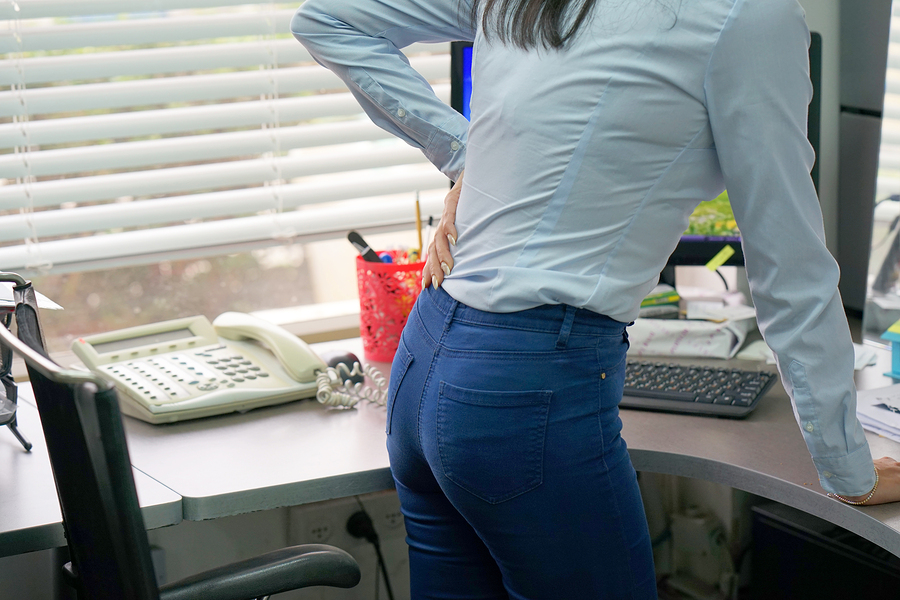“Bursitis” – even the word seems to ooze menace.
And that’s not too far off to tell the truth!
While we’ve written about shoulder bursitis in the past, it’s not just your arms that suffer from it – any joint can fall victim to bursitis.
Case in point: hip bursitis.
But first, a quick recap: what are bursae, and what do they do?
For those of you just tuning in, here’s a quick explanation of what your bursae are.
Every single joint in your body contains fluid-filled sacs. These sacs do a lot of things, but first and foremost, they counter friction in your joints.
Additionally, they double as shock absorbers, forming a protective barrier.
What would happen without your bursae? Well for starters, your bones would grind on each other and directly impact muscles and tendons.
Not only would this lead to janky movement, but it can also cause significant pain!
What causes bursitis?
Any condition which irritates the bursae can cause bursitis. Some of the more common ailments include:
- Injury and infection
- Health conditions like arthritis, gout, and diabetes
- Repetitive movements and overuse can wear out your bursae
Each of these causes your bursae to swell and become inflamed.
This is caused by increased movement of fluid and white blood cells as the body attempts to heal bursae in the affected joint.
Worst of all is the pain. With your bursae out of action, the bones in your joints come into direct contact with the tissue surrounding a joint – ouch!
Hip bursitis
What’s the most important joint in your body? That depends on who you ask.
When it comes to bursitis however, hip bursitis is without a doubt one of the worst types you can contract.
As the joint that’s responsible for supporting our standing weight as well as our ability to walk, it’s safe to say bursitis in this particular joint can be particularly disruptive.
A bad case of hip bursitis can prevent you from jogging or walking; in some cases, it can stop you from standing up altogether!
Just imagine how much disruption to your work, routine and life that can cause – no thanks!
Avoiding hip bursitis
As the saying goes, prevention trumps cure. Every. Single. Time.
While hip bursitis symptoms can be treated and will heal, you shouldn’t have to put up with all the disruption and pain that accompanies it at all.
Can’t afford to be put out of action? Luckily, there are a couple ways you can prevent bursitis from happening in the first place.
Take it easy
For starters, don’t push yourself too far and take frequent breaks.
Many cases of bursitis (any type) are the result of overuse injuries caused by constant repetitive movements with sub optimal movement mechanics.
That doesn’t just mean athletes, but also workers that use certain joints a lot – painters and carpet-layers come to mind.
Watch the weight
It’s also important to watch your weight.
This is good advice for a healthier life in general, but it’s especially relevant for avoiding hip bursitis, as extra weight strains your hip joint.
And while we’re on the topic of weight, have you thought of weight distribution?
If your carry around heavy loads, look for smarter ways to distribute the weight you carry (which is why we harp on movement mechanics).
How a Physio for hip helps you overcome hip bursitis
When it comes to preventing pain and strengthening hip muscles, there’s no better person to call than a dedicated Physio for hip.
A very effective intervention is the use of dry needling.
An interesting study revealed that dry needling was just as effective as cortisone in reducing hip pain symptoms.
(Dry Needling vs Cortisone Injection in the Treatment of Greater Trochanteric Pain Syndrome: A Non-Inferiority Randomized Clinical Trial
Kindyle L. Brennan, PT, PhD, Bryce C. Allen, MD, Yolanda Munoz Maldonado, PhD
Baylor Scott & White Health, Temple, Texas, U.S.A.)
One of the best ways to prevent bursitis is to strengthen the muscles around any particularly vulnerable joints – something your Physio for hip specialises in.
This provides extra protection for your bursae – any shocks or impacts will pass through the muscles surrounding your hip, redistributing the force and reducing the impact on your bursae.
That’s not the only way a physio helps.
Physiotherapy is about resolution and prevention – it’s all about stopping pain from returning, or ever appearing at all.
We’ll take a look at your technique and how you use your body. Based on this, we’ll help you optimise your movement to minimise your chances of hip bursitis.
Additionally, your Physio for hip can also prescribe tools that lighten the load on your joints such as taping, belts and lower back supports.
Not only can these ease pain and speed up recovery, but they also protect you from hip bursitis.
Think you might be at risk of hip bursitis?
Get in touch with a Physio for hip in Highett!
Hip bursitis can be extremely painful!
Luckily, you needn’t suffer through hip bursitis alone – or at all – when you have the leading Highett physio on your side.
At Physio AUS, we have one goal: keeping you pain-free for good.
To achieve that goal, we use a plethora of powerful, proven techniques, treatments and tools. These techniques fight off your pain and ensure you never have to deal with flare-ups ever again.
It’s not just hips we look at either – our experienced team of physiotherapists provide treatment for the entire body.
Whether you’re suffering hip bursitis, recovering from injury or suffering from an old ache, a physio in Highett can help.
Call our team today on 1300 392 552 today or make a booking online – that’s the first step to getting on a pain-free pathway!

 1300 392 552
1300 392 552

Leave A Comment